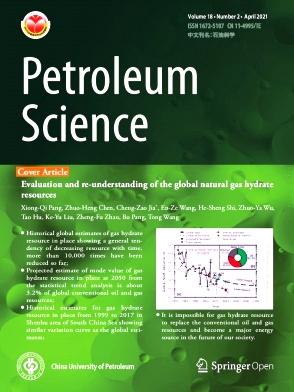Sedimentary architecture of a sandy braided river: Insights from a flume experiment
IF 6
1区 工程技术
Q2 ENERGY & FUELS
引用次数: 0
Abstract
Sandy braided river deposits are widely preserved in ancient stratigraphic records and act as a significant type of hydrocarbon reservoir. Due to the frequent and rapid migration of channels within the riverbed, the sedimentary architecture is highly complex. In this paper, a flume experiment was conducted to reveal the detailed depositional process and establish a fine sedimentary architecture model for sandy braided rivers. The result showed that (1) Three types of braid channels, including the lateral migration channel, the confluence channel, and the deep incised channel, were recognized based on geometry, scale, distribution, and spatial patterns; they are interconnected, forming a complex channel network. (2) Braid channels were characterized by lateral migration, abandonment, filling, and chute cutoff. Lateral migration of channels shaped the braid bars and dominated the formation, growth, and reworking of braid bars. (3) Controlled by the fast and frequent variations of the braid channel network, braid bars were continuously formed, reworked, reshaped, and composited of multiple accretions with different types, orientations, scales, and preservation degrees. Symmetrical and asymmetrical braid bars presented significantly different composition patterns. (4) Dominated by the continuous reworking of braid channels, temporary deposits were limited preserved, braid channel deposits account for 54.3 percent of the eventually preserved braided river deposits, and four types of amalgamate patterns were recognized. Braid bars were cut and limited preserved, only accounting for 45.7 percent of the eventually preserved braided river deposits. (5) During the experiment, only 28 percent of near-surface temporary deposits were eventually preserved in fragmented forms with the final experimental braided river; the shape, spatial patterns, and most of the deposits observed during the depositional process were largely reworked and poorly preserved. (6) The scale of eventually preserved braid bars and braid channels is significantly smaller than the temporary deposits from geomorphic observations. The aspect ratio of the eventually preserved braid bars and the width-to-depth ratio of the eventually preserved braid channel are also significantly different from that of the temporary ones measured from topography data.
沙质辫状河的沉积结构:水槽实验的启示
本文章由计算机程序翻译,如有差异,请以英文原文为准。
求助全文
约1分钟内获得全文
求助全文
来源期刊

Petroleum Science
地学-地球化学与地球物理
CiteScore
7.70
自引率
16.10%
发文量
311
审稿时长
63 days
期刊介绍:
Petroleum Science is the only English journal in China on petroleum science and technology that is intended for professionals engaged in petroleum science research and technical applications all over the world, as well as the managerial personnel of oil companies. It covers petroleum geology, petroleum geophysics, petroleum engineering, petrochemistry & chemical engineering, petroleum mechanics, and economic management. It aims to introduce the latest results in oil industry research in China, promote cooperation in petroleum science research between China and the rest of the world, and build a bridge for scientific communication between China and the world.
 求助内容:
求助内容: 应助结果提醒方式:
应助结果提醒方式:


